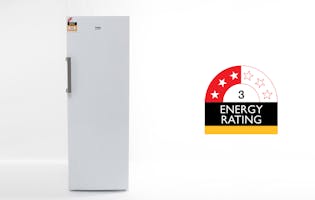How to keep your fruit and vegetables fresh for longer
Sick of your spinach wilting and carrots going limp before you’ve had a chance to use them?
Love Food, Hate Waste New Zealand is a national campaign, started in 2016 by WasteMINZ to help New Zealanders reduce their food waste.
Here are their tips on how to correctly store fruit and veg.

Vegetables
Broccoli
Keep broccoli in a zip-lock bag in the fridge if you’re going to use it within a couple of days. If you need it to last longer, sprinkle the head with water, wrap in paper towels and store in an airtight container or bag.
Carrots
Store carrots in an airtight container lined with a paper towel or dry reusable cloth to stop them going limp. This absorbs excess moisture that develops when carrots are sitting in storage and extends their life up to 10 times!
Celery
If you have a whole celery, wrap the root end in a paper towel or cloth and place in a bag. Squeeze out the excess air and store in the fridge.
If you have chopped celery, store it in an airtight container lined with a paper towel.
If you don’t have a container or bag large enough, you can wrap the entire stem with tinfoil instead. Make sure there is no exposed surface.
Cucumbers
There’s not much difference between a cucumber being stored in the fridge or at room temperature. Make sure to keep the plastic wrapping on the cucumber as it protects the soft skin and prevents dehydration.
Eggplants/aubergines
Eggplants are best stored in the fridge.
Kumara
Should be stored in a cool, dark place, but not in the fridge.
Leafy greens
Store leafy greens in an airtight container or bag in the fridge. This will stop them going slimy, and they’ll last twice as long.
Lettuce
Wrapping your lettuce in a paper towel, cloth, or tea towel and placing it in an airtight container or bag will result in it lasting up to four times longer.
Pumpkin
The best way to store cut pumpkin is to wrap it tightly in cling wrap, beeswax wrap or a bag and place it in the fridge. It doesn’t matter if you leave the seeds in or take them out.
Potatoes and onions
Potatoes and onions should not be stored in the fridge. Keep them in a cupboard – separately, as they cause each other to sprout.
Sweetcorn
Refrigerate sweetcorn in its husk to keep it fresh for longer.
Fruit
Apples
Apples last eight times longer in the fridge than in the fruit bowl.
Avocado
Store avocados at room temperature to ripen. Once ripe, move them to the fridge.
The most effective way to store a cut avocado is to leave the stone in, wrap it tightly with cling wrap or beeswax wrap, and keep it in the fridge. Popping it in an airtight container works well too.
Bananas
Bananas should be kept out of the fridge and stored separately from other fruit. When ripe, they produce ethylene gas, which ripens other fruit.
If you want to slow the ripening process down, pop the bananas in a zip-lock bag or container in the fridge to control the ethylene gas and delay them getting overripe.
Lemons and limes
Store lemons and limes in your fruit bowl if you’re planning on using them within a week. If you want to keep them longer, stash them loose in the fridge.
Cut lemons can be stored in an airtight container or zip-lock bag in the fridge.
If you have your own tree, you may want to freeze your excess citrus, so they don’t go off. You can freeze them whole or juice them and freeze the juice.
Oranges
Keep stored loose in fridge.
Stone fruit
If your stone fruits are ripe, store them in the fridge to make them last longer. If they need to ripen, keep them at room temperature.
Tomatoes
Should NOT be kept in the fridge as it affects their texture and flavour. Store them at room temperature.

Bonus tips
- The key to making your produce last is controlling its air exposure and moisture levels.
- Most fruit and veggies are better left unwashed while in storage. Residual moisture can cause them to rot prematurely. Wait to wash fruit and veg until you’re about to use them.
- If possible, try to separate fruit and veggies in the fridge, as they can speed up each other’s ripening process.
- Reuse zip-lock bags, containers and glass jars. If the produce is too big, use whatever bags you have on hand. Ask yourself if you can reuse any plastic packaging before binning it.
- You can switch out a single-use paper towel for a dry reusable cloth or tea towel. If it starts getting too damp, replace it with a dry one to extend the life of your produce further.
- Experiment with what works best for you based on the containers and storage options you have. If things start to wither prematurely or develop brown spots, consider freezing them. When you have enough, chuck them in a smoothie.
We've tested 194 fridges.
Find the right one for you.
Bosch
.jpg&w=315&q=75)

.jpg&w=315&q=75)
Member comments
Get access to comment